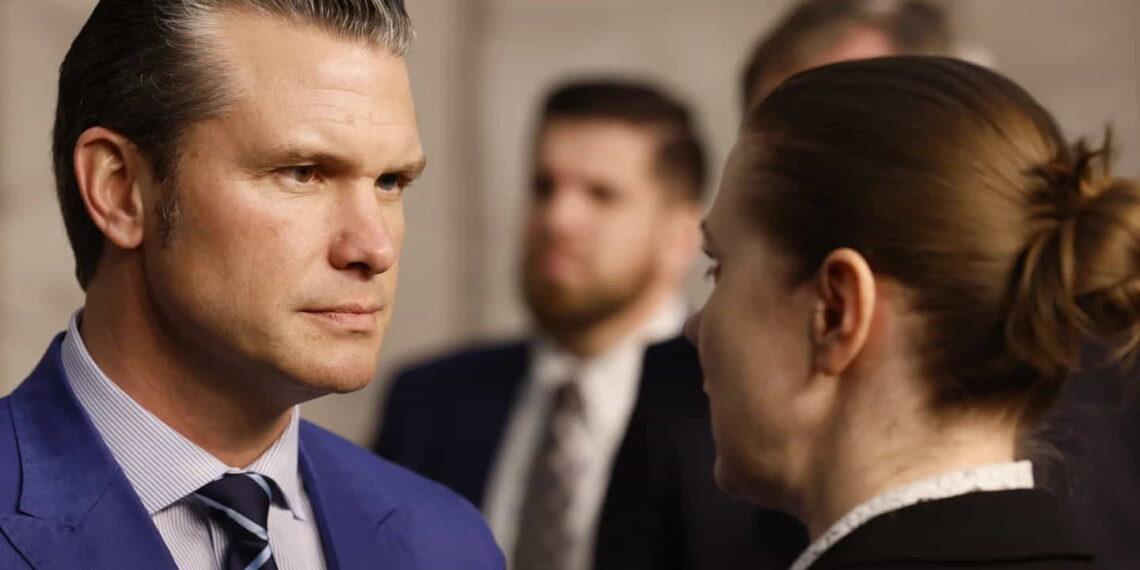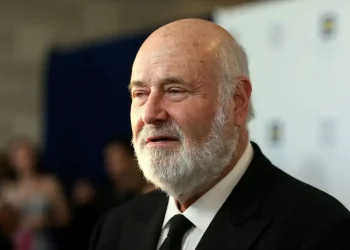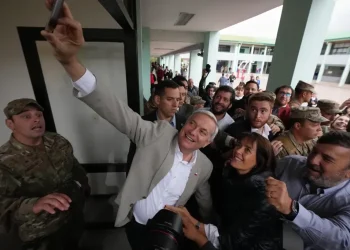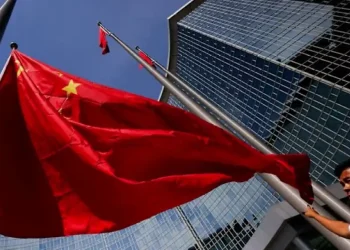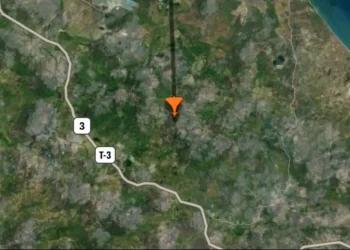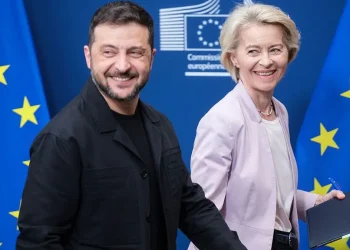NATO in Crisis as U.S. Shifts Security Focus Elsewhere
The world’s most powerful military alliance, NATO, is in turmoil following a shocking announcement by U.S. Defense Secretary Pete Hegseth. In a single speech this week, Hegseth cast doubt on America’s commitment to European security, raising serious concerns among NATO allies.
America’s Changing Priorities
Speaking to nearly 50 Western backers of Ukraine, Hegseth made it clear that the United States’ primary security focus is no longer on Europe.
“The United States faces consequential threats to our homeland. We must — and we are — focusing on security of our own borders.”
Hegseth’s blunt message to NATO allies included:
- Ukraine will not regain all its territory from Russia.
- Ukraine will not be allowed to join NATO.
- NATO will not play a role in policing peace in Ukraine—European nations must take responsibility.
- No American troops will participate in any future peacekeeping efforts.
- If European nations involved in such efforts are attacked by Russia, NATO will not intervene.
This stance leaves Europe in a precarious position, as Russia is likely to test the resolve of any force operating without U.S. backing.
“A Real Moment of Truth” for NATO
French Defense Minister Sébastien Lecornu called the situation “a real moment of truth“ for the alliance.
“To say that it’s the biggest and most robust alliance in history is true, historically speaking. But the real question is, will that still be the case in 10 or 15 years?”
Hegseth’s words have shaken NATO’s foundation, raising doubts about whether the alliance can survive without strong U.S. leadership.
What is NATO?
Founded in 1949 to counter the Soviet Union, NATO has grown to 32 member countries, with Sweden joining just last year due to concerns over Russia’s aggression.
The Core of NATO: Article 5
NATO’s strength lies in Article 5, its collective security guarantee:
An attack on one member is considered an attack on all.
This commitment has been the backbone of NATO’s credibility. However, Hegseth’s remarks now cast doubt on America’s willingness to uphold this pledge.
While the U.S. is not leaving NATO, its reluctance to commit to European security raises fears about the alliance’s future effectiveness.
Ukraine’s Membership is Off the Table
Hegseth explicitly ruled out Ukraine’s NATO membership, removing a key deterrent against future Russian aggression.
Who Runs NATO?
While NATO is an alliance of 32 nations, the United States has historically driven its agenda. The U.S. contributes the most in terms of military power and defense spending, and its leadership shapes NATO’s strategy.
Key Figures in NATO
- Mark Rutte (NATO Secretary-General): Leads NATO’s daily operations, chairs meetings, and builds consensus among members.
- Gen. Christopher Cavoli (Supreme Allied Commander Europe): The highest-ranking military officer in NATO, always a U.S. general.
Hegseth’s speech made it clear: the U.S. will decide the alliance’s direction, and Europe must adapt.
What is NATO Doing to Help Ukraine?
Despite the existential threat posed by Russia, NATO itself does not provide weapons to Ukraine.
NATO’s Limited Support
The alliance offers only non-lethal aid, including:
- Fuel
- Combat rations
- Medical supplies
- Body armor
- Anti-drone and demining equipment
However, individual NATO members—mostly European countries—have provided 60% of Ukraine’s military aid in 2024.
A Common Misconception
Many assume NATO leads all Western support for Ukraine, including sanctions and military aid. In reality, NATO’s official mission is limited to the defense of its own member states, not external conflicts.
This was the case—until now.
NATO’s Military Presence in Europe
With the war in Ukraine soon entering its fourth year, NATO has ramped up its defenses:
- 500,000 troops on high alert
- Military forces ready to respond on land, sea, air, and cyberspace
- New members Finland and Sweden joining to strengthen regional security
No NATO Troops in Ukraine
While some European nations have discussed sending military personnel to Ukraine, NATO itself has no plans to deploy troops.
Hegseth put an end to speculation, making it clear that American forces will not participate.
Who’s Carrying the Burden?
For decades, the U.S. has shouldered the majority of NATO’s defense spending due to its massive military budget.
Europe is Increasing Military Spending
Following Russia’s annexation of Crimea in 2014, NATO members pledged to spend at least 2% of GDP on defense.
- In 2023, NATO changed the 2% goal from a target to a minimum spending requirement.
- 23 NATO countries met this spending threshold in 2024, up from just three a decade ago.
- NATO Secretary-General Mark Rutte suggests members may need to spend 3% or more.
France: The Debate Over Defense Spending is Over
French Defense Minister Lecornu dismissed concerns over rising military budgets, arguing:
European nations are already increasing defense spending and providing weapons to Ukraine.
With the U.S. stepping back, Europe is being forced to take greater responsibility for its own security.
The Future of NATO: Uncertain and Divided
Hegseth’s speech marks a turning point for NATO. The alliance, once unquestioningly led by the United States, now faces an uncertain future.
- Will NATO survive without full U.S. commitment?
- Can Europe shoulder the burden of its own defense?
- How will Russia respond to a weaker NATO?
These questions will define NATO’s fate in the coming years.
For now, one thing is clear: NATO will never be the same again.
This article was rewritten by JournosNews.com based on verified reporting from trusted sources. The content has been independently reviewed, fact-checked, and edited for accuracy, neutrality, tone, and global readability in accordance with Google News and AdSense standards.
All opinions, quotes, or statements from contributors, experts, or sourced organizations do not necessarily reflect the views of JournosNews.com. JournosNews.com maintains full editorial independence from any external funders, sponsors, or organizations.
Stay informed with JournosNews.com — your trusted source for verified global reporting and in-depth analysis. Follow us on Google News, BlueSky, and X for real-time updates.
